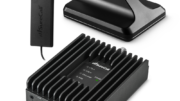This one’s a “no.” Recently, one of our customers called us and wanted to get a cell booster that would cover 30 acres of open space. We had to quietly apologize and say that we couldn’t do anything for something that size. We’d love to, but you just can’t get a consumer-grade cell booster that will cover that much area. Turns out that’s a good thing, and here’s why.
That’s a big space
30 acres, which is about 1.3 million square feet, is a space far too big for consumer-level cell boosters because cell boosters are specifically designed for much smaller spaces so that they don’t interfere with each other or with the system of cell towers in place nationwide. A device that covers that much area would be considered a microcell or even a full-fledged cell tower, and would be subject to approval from the carriers and from the government. A regular person wouldn’t be able to operate it.
This isn’t about personal liberty, really
Before you get all up in arms about the government stopping this innocent person from doing what they want to do, the government’s role here is making sure that towers don’t stomp all over each other and ruin service for everyone. The FCC’s mission is to issue the licenses that you need to run a cell tower. It’s actually not a bad thing that they’re involved in this very specific instance.
So what can the customer do?
What did we say to this individual? W recommended that they contact their cell carrier. The carrier can put a cell tower on the property. It would be their decision whether or not to do so. It’s not likely the carrier would put a cell there just for one customer but it isn’t impossible. The customer can also look into building their own tower.
Yes, this can get expensive. But, it is the way to go if you’re the only one using the cell service. Because a regular cell tower can cover about 1.5 square miles (more in some cases) it’s better to try to find out who else would benefit from coverage; for example if there are other homes or buildings in the area or if the site is close to a main road. That’s more interesting for the cell carriers because it makes it more likely that the tower will pay for itself.
It’s hard to know exactly what the right choice is for someone who wants that much coverage, but certainly one option would be the use outdoor access points. Yes, this is another extremely expensive solution for the area you’re serving but at least it’s a solution. With an access point, you would use Wi-Fi calling, Skype, or WhatsApp to make calls. More than one access point could be used if there was enough access to power on that big 30-acre spot.
There isn’t a really good solution in this case, but the good news is that as AT&T continues its buildout of FirstNet towers, there are likely to be fewer of these little pockets where there’s no service.





